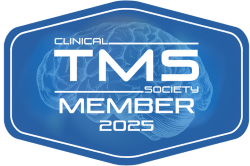
Teresa Poprawski, MD, QEEGD, Chief Medical Officer, Relief Mental Health
Unlike other branches of medicine, the field of mental health does not have a single biological, objective test to assess the level, severity, or presence of depression, or simple tests for any other mental health diagnoses.
No blood test can show markers for depression, anxiety, or any other mental health condition.
Brain imaging techniques like fMRI, PET, CT, QEEG and others can help clinicians identify structural and functional abnormalities, but they cannot diagnose psychiatric disorders either.
Scientists are hard at work developing blood and brain biomarkers as a means of providing objective measures for mental health diagnosis, but the results of these efforts are still years away. Therefore, mental health care remains the only medical specialty in which the basis for diagnosis and treatment is subjective self-reporting of symptoms by the patients or a third party.
In the absence of objective biological tests, a variety of rating scales are available to assess, evaluate, monitor, and research mental illnesses. These rating scales/tests can be administered by a provider or self-reported by a patient who answers a series of questions. Depression rating scales range from 17 to 80 questions. In the field of mental health, an accurate diagnosis is essential. Inaccurate diagnoses can cause significant distress, extend treatment time, and may exacerbate disorders that inaccurate diagnoses fail to recognize.
That’s why consistent and accurate diagnostic tools are so important: they can make a substantial difference in effectiveness and duration of treatment. In the early years of depression treatment and diagnosis, providers relied on tests that focused solely on symptoms of depression, which was logical. However, as our knowledge of the various factors associated with depression increased and expanded, we began using what we refer to as multidimensional tests, like one developed in 2012 that’s in widespread use today: the Multidimensional Depression Assessment Scale (MDAS).
What is the Multidimensional Depression Assessment Scale (MDAS)?
The MDAS is a self-administered depression rating scale that developed to assess presence and severity of depression across four main domains, or areas, of mental health:
- This domain includes feelings associated with depression, such as sadness, anger, guilt, shame, and others.
- This domain includes thoughts and mental states associated with depression, including hopelessness, pessimism, lack of pleasure, self-blame, and others.
- This domain includes physical characteristics or sensations associated with depression, including energy levels, fatigue, appetite, phantom aches and pains, and others.
- This domain includes the elements of depression that impact relationships with others, including behaviors like social withdrawal, avoidance, aggression, anger, irritability, and others.
The test covers 52 specific items from the four domains. This is a significant expansion from previous standard depression tests such as the Patient Health Questionnaire-9 (PHQ-9) and the Beck Depression Inventory (BDI), which include 9 questions and 21 questions, respectively. While these are effective, accurate tests, they lack the added domains that make the MDAS an important tool for clinicians.
Why Do We Need Multidimensional Depression Tests?
In a nutshell, we need robust multidimensional depression tests in order to gather more information about the patients who come to us seeking support for depression.
The comprehensive nature of the MDAS allows providers to understand not only the emotional features of the depressive disorder in each patient, but how the symptoms of the depressive disorder may – or may not – affect their thoughts, bodily sensations, and relationships with others. All of this information helps providers design a treatment plan that’s tailored to the immediate, specific needs of each patient.
The general idea behind multidimensional tests like the MDAS is simple: the more we know, the better we can help.
Is the MDAS Different Thans Other Depression Tests?
Yes.
The creators of MDAS argued that the existing depression rating scales gave credence to items in cognitive domain, followed by the somatic domain, and then by the emotional domain, while largely ignoring the interpersonal domain.
Before designing the MDAS, researchers reviewed the standard tests for depression and observed:
- Only 8 out of 15 tests included questions in the interpersonal domain
- The remaining 7 had only 11 questions in the interpersonal domain
- Among the most common tests used to diagnose depression, only 3% of questions – that’s the cumulative total from all tests – addressed issues in the interpersonal domain
The creators of the MDAS saw this as a problem, and hypothesized that including the interpersonal domain in a new scale would result in better assessment, especially in the context of interpersonal psychotherapy and the reciprocal relationship between interpersonal deficits and depression.
Are There Standard Tests for Depression?
Yes.
Several tests for depression are effective in clinical settings. Most of the tests have been validated through the years and confirmed by many academic studies. A group of perhaps 10 to 15 tests could be characterized as standard, but some are favored over the others depending on the clinical settings, mental health practitioners’ preference and experience, and the needs of the patients.
In my observations, of the self-administered variety, the two I mention above – the Beck Depression Inventory (BDI-II) and PHQ-9 – are used most often. Of the scales administered by clinicians, the Hamilton Rating Scale for Depression (HAM-D) and MADRS are probably the most common.
The Importance of Ongoing Assessment
As surprising as it may seem, rating scales are often ignored in clinical settings by the providers. Studies from the early 2000s indicate that only 30 to 40 percent of psychiatrists use the scales to assess and monitor depression and anxiety.
The most often quoted reason for not using a rating scale is lack of time.
While the providers are always under time pressure to see many patients, and patients are almost always reluctant to complete a lengthy questionnaire, gathering consistent feedback is invaluable to the success of any treatment.
I encourage the providers that don’t use rating scales to either make or find the time to use them, because it will enable them to be more responsive to the immediate needs of their patients, which can evolve and change over time, and even change visit-to-visit.
My Personal Approach to Assessment
Relying on general questions to assess the current state of a patient can be misleading. In my practice, I use Beck Depression Inventory (BDI-II) on every patient, at every visit.
I use the BDI because of the consistency of the results and ease of administration in clinical settings. The questionnaire is relatively short and patients have an easier time answering fewer questions, which is an important practical consideration for the way I use this test.
The reason I administer a short assessment at every visit is this: with surprising consistency, many of my patients tell me that they have not improved since the last visit. They often report their symptoms are the same, and in some case, maybe worse. But when they take the BDI-II, the result indicate otherwise: they often show improvement my patients can’t see.
It’s a classic can’t see the forest for the trees scenario: the individual symptoms they experience on a daily basis – the trees – occupy their attention, and obscure the overall progress they’ve made on their diagnosis of depression – the forest. When asked about specific questions on the questionnaire, they may elaborate and indeed, confirm they’re doing better.
Showing them the previous survey, they can see the progress with their own eyes.
When I see that spark of recognition, and the awareness that treatment is working, that makes my day – and every time, I smile on the inside.


